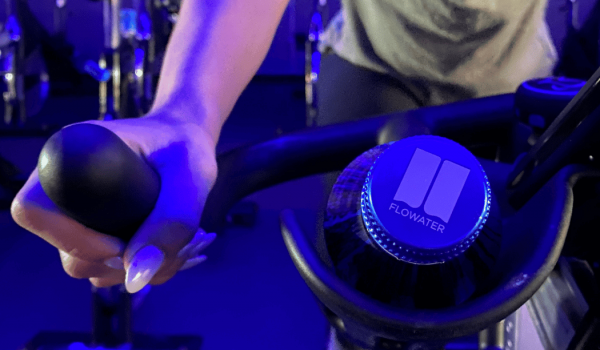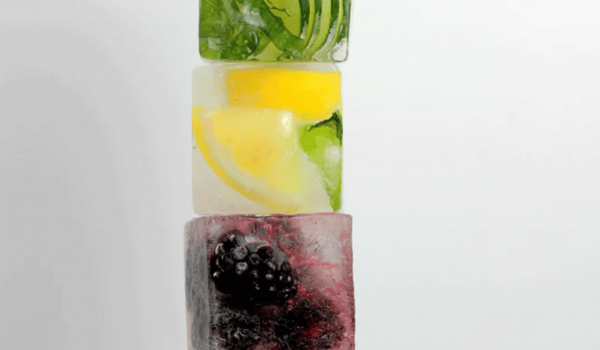Everyone deserves access to clean drinking water, especially students. For the majority of school districts, students rely on buying bottled water to ensure they’re drinking water tastes great, while still being convenient. Though there’s been an increase in the number of people who rely on reusable water bottles, the sales of bottled water remain steady. Every minute approximately one million plastic bottles are sold, with only about 23 percent of plastic bottles recycled in the U.S.
Allowing single-use bottles in schools leads to more harm than good. Through the use of FloWater’s water bottle filling stations for schools, administrators can ensure their students and staff are receiving fresh, filtered water whenever they need it. Installing a FloWater Water Refill Station eliminates the need for plastic water bottles. FloWaters’ customers see a massive decrease in the amount of plastic waste when students use water bottle filling stations.
Determining if plastic water bottles in schools should be allowed is currently in the hands of administrators who decide when and how they’ll implement changes that will help students, the school, and the environment. What makes change easier is when there’s a solution, such as FloWater, that other industries have already successfully adopted to replace the use of plastic bottles, while still keeping people hydrated.
FloWater Can Help Schools Become “Plastic-Free”
The negative effects of plastic waste on the planet isn’t new information, and the problem is worsening with time. It takes hundreds of years for plastic to decompose naturally, if at all. In the meantime, landfills become overrun with plastic waste, and it spills into the ocean that ultimately affects our entire ecosystem. Most students understand the impact of using plastic water bottles has on the planet, but aren’t given any tangible ways to help fix the problem.
Student’s two alternatives are usually either buying bottled water from a campus vending machine or drinking from a water fountain, neither of which is desirable compared to using a purified water dispenser. Buying bottled water is costly to students and contributes to the amount of plastic waste found on school grounds. Water from drinking fountains isn’t always deemed safe to drink, which makes students less inclined to use them regularly. According to customer research, 87% trust FloWater over water fountains, which has resulted in a 250% average increase in clean water consumption.
FloWater dispenses cold, purified water on-demand in far less time than it takes getting water from a drinking fountain or standard water cooler. It can fill up any size reusable water container, which makes it helpful for students and faculty to maintain their daily hydration easily. However, it’s up to the schools to promote the use of a water refill station by educating students about its benefits with ongoing communication. Three of the main advantages of installing a hydration station in schools are the reduction of plastic waste on campus, availability of water free of contaminants, and a great-tasting alternative to sugary drinks and other beverages.
Reduces Plastic Waste
This generation of students is passionate about protecting the environment and taking actionable steps to do so. They need to have the resources available to make these changes. Installing a water dispenser to replace the use of plastic water bottles gives them a convenient, effective solution.
It eliminates the need for single-use water bottles and reduces the amount of overall plastic waste on campuses. Over time, if the demand for plastic water bottles begins to decrease, production would slow down as well, which would save millions of barrels of oil and fuel needed to make and transport bottled water. A change that seems small can cause a chain reaction that results in a meaningful impact.
Promotes Hydration With Purified Water
Hydration is as important to health as a good night’s sleep and a balanced diet. Proper hydration allows students to focus better and stay productive longer, which leads to improved attendance and quality performance during school. The key is to encourage students to drink more water.
If schools only offer water through drinking fountains, it often deters students from drinking it as often as they should. Depending on the age of the fountain, the water dispensed may have an unpleasant taste or odor. It’s also difficult to determine the number of pollutants found in the water as well. Many states have faced trouble with increased amounts of lead in their water supplies, turning people off of drinking water from the tap.
FloWater water eliminates 99% of all contaminants, including chemicals, pesticides, and other lingering particles that negatively affect the quality of water. Tap water transformed by passing through seven stages of advanced filtration to create crisp-tasting, cold water that is desirable to drink.
Offers a Crisp, Delicious Alternative to Sugary Drinks
If schools replaced plastic water bottles with a water dispenser, it provides the same convenience and less of a cost to students than a drinking fountain or buying a soda from the vending machine. It also provides a beverage that has the same electrolytes students get from sports drinks, which often have added sugars. One of FloWater’s seven filters is an electrolyte enhancement, which adds sodium, magnesium, calcium, and potassium back to the water after it’s strained out all pollutants and unpleasant odors and tastes. Using a water cooler dispenser in schools in place of vending machine options will encourage students to stay hydrated.
Serves a Large Capacity of Students
Filling up at a water fountain can take a long time when every second matters as students try to hurry between classes and school activities. Alternatively, vending machines can jam or run out of products leaving students with no other options to hydrate. A water refill station provides purified water automatically and dispenses at a much faster rate than the average drinking fountain or water cooler.
Each 20-ounce bottle only takes 9 seconds to fill up, which moves people through the line at a faster rate. The tanks auto-fill every time water is dispensed, so it never “run out.” When not in use, the station goes into sleep mode, which saves on energy costs. It’s common for schools with large student bodies to have multiple stations to accommodate the highest traffic areas and the places that are the most convenient for students to fill up on the go.
How States Are Shifting to Eliminate Plastic Water Bottles in Schools
Certain high schools and college campuses around the country have started to increase sustainability in their schools by focusing on eliminating plastic waste. sustainability efforts. The problem with plastic has increased to the point where individual states are already limiting or banning the use of plastic bags and plastic straws to help mitigate the problem.
California voters approved the statewide single-use carryout bag ban in 2016. In its place, shoppers can use reusable grocery bags at a cost or bring their own bags to use. Following this fight against plastic, the state also banned dine-in restaurants from automatically providing plastic straws to customers in 2019. Although the same can’t be said for the ban of plastic water bottles quite yet, several schools across the U.S. are banning them or implementing campaigns to restrict or reduce the sales of bottled water on campuses.
A charter school in Los Angeles claims to be the country’s first K-12 public school to ban single-use plastic bottles. In their place, the school has installed filtered hydration refill stations and sells reusable aluminum bottles for the same price of $1.50, or students are encouraged to bring their own reusable water bottles from home. Colleges, including the University of Pennsylvania, have also installed hydration stations around campus to encourage the use of reusable containers over plastic water bottles in schools.
Change takes time, and while there have been great strides over the years with regards to recycling and sustainability, it’s not something that will occur nationwide overnight. However, progress is made with little steps. As more people understand the value of eliminating plastic water bottles and implementing the use of water refill stations in schools, the more common it’ll become.
Get Started With Eliminating Plastic Waste
To initiate change, education is important for students to understand why the change is beneficial for them. Running clean water campaigns and bringing in outside guests to speak to the students about the impact of using a water refilling station with a reusable water bottle versus one-use plastic bottles. Constant communication about it stresses the value and serves as a lesson or reminder of how much they’re helping the planet.
Everyone wants a convenient solution without being costly to them, but also consistently tastes great. That’s why FloWater has become popular with schools, as well as hotels, airports, gyms, and other areas where there’s a large capacity of people to be served at one time. It’s not a question of, should plastic water bottles be allowed in schools? It’s a question of, how will students adjust when they’re not? Give students a premium alternative to plastic water bottles and see how much more water they consume and how much less plastic waste is found on campus. You’ll notice a difference right away.
Sources:
https://www.earthday.org/2018/03/29/fact-sheet-single-use-plastics/
https://www.plasticpollutioncoalition.org/guides-schools
https://abc7.com/education/puc-community-charter-bans-single-use-plastic-bottles/5272628/
https://www.everbluetraining.com/blog/college-campuses-ban-bottled-water










